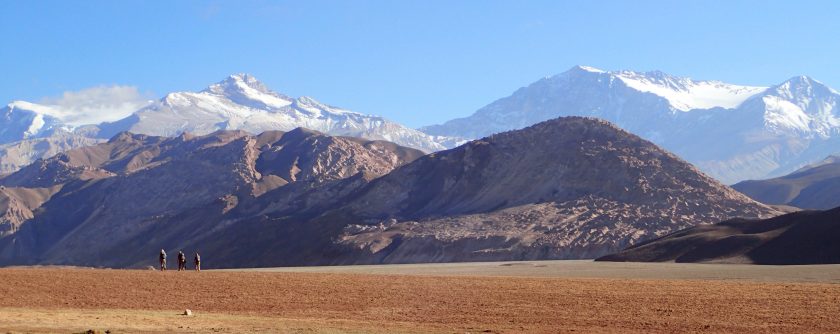Breaking Down Broken Foreland Basins
December 12, 2023

If you ask a group of geologists to define a broken foreland basin, you’re apt to get different responses. But if you ask why these basins form, there’s usually one consensus answer — flat slab subduction.
A study led by the Jackson School of Geosciences is offering a different take. The researchers present a categorical definition for broken foreland basins and suggest that an array of geological mechanisms, not just flat slab subduction, could lead to their formation.
“Many geologists have used broken foreland basins as a definitive marker for a very specific tectonic situation that involves flat slab subduction,” said lead author and professor Brian Horton. “We’re starting to recognize that there are multiple potential pathways.”
The study was published in Earth Science Reviews.
Foreland basins form adjacent to mountain belts, facing the interior of a continent, and fill up over time with eroded sediments deposited across the surrounding lowlands. The basin systems can play a major role in shaping the landscape — influencing climate, waterways and sediment dispersal at the continental scale.
Foreland basins come in two varieties: continuous and broken, with the broken basins hosting deep faults that break up the basin and bring deep basement rock to Earth’s surface. But distinguishing between the two basin types has been a fuzzy matter for geoscientists.
The study seeks to remedy that by offering a detailed definition that describes the basin’s topographic setting, crustal faults and sedimentary response to the structural disruption of an otherwise continuous lowland plain. The work also includes a comparative analysis between broken foreland basins and continuous ones.
“It’s not just semantics,” Horton said. “This approach leads us somewhere new in considering what’s driving these systems and their structural and stratigraphic conditions, modern and ancient.”
In their synthesis, the researchers caution against viewing flat slab subduction as an exclusive explanation for broken foreland basins, and they argue that there’s more than one way to break a basin. They divide the potential drivers into two categories: inherited, preexisting conditions that help promote breakage, and an array of potential triggers that stem from the mountain building process.
Four of the study’s co-authors earned doctorates from the Jackson School: Tomas Capaldi, an assistant professor at the University of Nevada, Las Vegas; Chelsea Mackaman-Lofland, an assistant professor at Denison University; Nicholas Perez, an associate professor at Texas A&M University; and Meredith Bush, a high school teacher in Seattle.
The study was funded by the National Science Foundation.
Back to the Newsletter